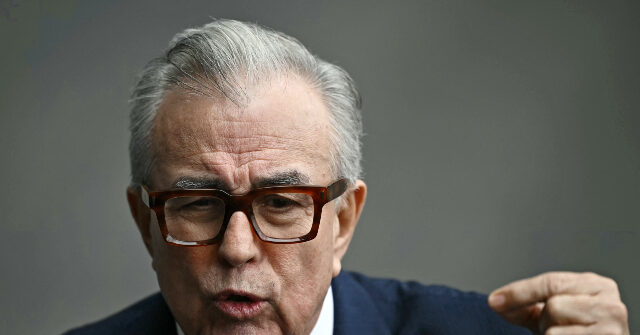A Mexican governor, linked to drug cartels, has recently blamed journalists for potential attacks against him following their investigations into his alleged connections to the capture of notorious drug lord Ismael “El Mayo” Zambada. Sinaloa Governor Ruben Rocha Moya has pointed fingers at journalists Luis Chaparro and Azucena Uresti, claiming their reporting seeks to tie him to Zambada’s apprehension, thus inviting retaliation from criminal groups. This situation escalated after these journalists revealed that U.S. authorities could not verify Rocha Moya’s claim of being in Los Angeles on the day Zambada was captured, raising significant concerns about the governor’s accountability amid ongoing violence in the region.
On July 25, Zambada was reportedly captured during a meeting involving key politicians, including Joaquin Guzman Lopez, the godson of the infamous drug lord Joaquin “El Chapo” Guzman. Guzman Lopez orchestrated Zambada’s capture and subsequently handed him over to U.S. authorities at a private airfield in Texas, igniting a violent power struggle in Sinaloa and beyond. The ensuing battle for control intensified, resulting in a surge of murders and kidnappings that have made headlines and amplified fears regarding safety in a region long plagued by drug-related violence.
The accusations against Rocha Moya have gained traction since the incident, leading to widespread media coverage suggesting his involvement in the meeting where Zambada was captured. As these sensationalized claims spread, the governor’s position has come under scrutiny, prompting top Mexican officials to publicly deny that he was present during the meeting. In response, Rocha Moya maintained that he was in Los Angeles on a personal trip, leading to further controversy as journalists scrutinized the validity of his statements regarding his travel.
During a press conference, Rocha Moya presented an alleged flight plan to substantiate his claims, but questions arose regarding its credibility. Journalists reported statements from U.S. Customs and Border Protection officials indicating that Rocha Moya’s name did not appear in any records related to his purported entry into the United States on the dates in question. This discrepancy has raised eyebrows and deepened public suspicion, feeding into the narrative that the governor may be attempting to deflect blame while trying to preserve his political standing in a dangerous environment.
The accusations made by Rocha Moya have drawn sharp criticism from organizations dedicated to press freedoms, including the Committee to Protect Journalists (CPJ), which has consistently highlighted the perilous conditions for journalists in Mexico. In light of Rocha Moya’s statements, CPJ reiterated its stance on the increasing danger faced by those who report on crime and corruption in Mexico. The organization emphasized the importance of protecting journalists and highlighted the potential for retaliation against those who dare to investigate or expose corruption among political leaders in the region.
The ongoing conflict underscores the broader ramifications of drug cartel violence and political corruption in Mexico. Journalists in the country often work under significant threat, and Rocha Moya’s comments may further intimidate those who report on issues of public concern. As the situation develops and the narratives surrounding Zambada’s capture continue to unfold, it remains to be seen how these conflicts between the media, influential politicians, and drug cartels will impact both public safety and the fight for journalistic integrity in a landscape fraught with danger.

